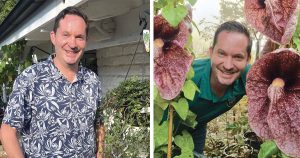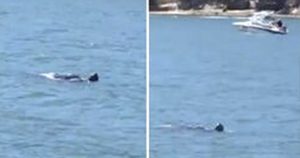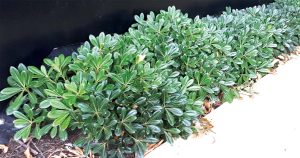I spend a lot of time pulling out weeds on my own property, at Bushcare, Landcare working bees, in National parks and other bush areas. It is surprising how the same weeds pop up in all these places. I got to thinking – if the people who have these plants could stop them spreading into the bush, how good would that be! I would rather we did not grow these plants at all, but if we want to, here is what needs to be done to stop them spreading:
Cassia (Senna pendula). The seed pods look like beans. When they turn brown, they split and release up to 50 seeds with a long life. To stop spread, remove all the seed pods. If you can’t reach them, prune the plant until you can.
Ochna (Mickey Mouse plant) has yellow flowers, then red with black seeds. We have an ongoing battle with these plants in Carrs Bush. Remove all the seeds before they go black.
Passionfruit seedlings grow in bushland everywhere. Don’t let seeds be spread by people, animals or birds.
Seaside daisy spreads quickly and needs multiple visits to remove it. Seeds are spread by wind. Cut all dead flowers off before they go to seed.
Japanese honeysuckle is a real nuisance. Remove the black seeds before birds can spread them. Prune the plant so you can reach them all.
Formosan lily. Cut the flowers off as soon as they are finished to prevent the seed capsules growing.
Agapanthus. This popular plant is becoming weedy and is forecast to be a major problem. Cut the flower heads off as soon as they are finished to prevent many black seeds forming.
There are many other introduced plants that invade the bush, like Jacaranda, Camphor laurel, Lantana, Privet, Crofton weed, Whisky grass, Mothvine, Arum lily, Mother of millions, Fishbone fern, Trad, Bridal creeper, Fireweed, Blackberry, Farmers friend. If we all controlled these plants on our own properties and nature strips, far fewer of them would end up in the bush. I realise this is a big ask, but it would help enormously.
Landcare members can help identify weeds and give advice on how to remove them. For contact details, see www.stillcreeklandcare.org.au










